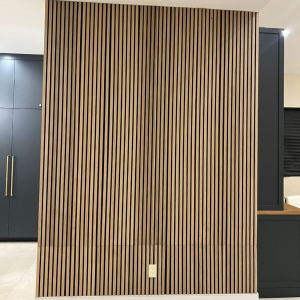
Innovative Approaches to Combat Wood Deterioration: Top Wood Preservation Methods
Wood is still used extensively in construction, furniture, and a variety of industrial applications. However, its longevity is constantly jeopardized by environmental, biological, and physical influences. Understanding the causes of wood deterioration and using sophisticated wood preservation procedures can considerably increase its lifespan and performance. This book examines the most effective methods for preserving wood and ensuring its long-term utility. Using modern techniques like
ensures wood remains resilient against decay.
What Causes Wood Deterioration?
Understanding the underlying causes of wood decay is vital for implementing effective wood preservation measures. Sustainable practices, like
, help reduce wood waste and promote resource efficiency. The following are the primary variables that contribute to wood decay:
Biological Agents: Fungi, Insects, and More
Biological decay is primarily caused by fungi, bacteria, and wood-destroying insects:
Fungi: Brown rot and white rot fungus eat vital structural components of wood, reducing its strength.
Insects: Termites, carpenter ants, and wood-boring insects eat or burrow through wood, causing extensive structural damage.
Bacteria: Moist environments can promote bacterial activity, resulting in soft rot over time.
Environmental and Moisture Damage
Environmental exposure and moisture are significant contributors to wood deterioration:
Moisture: Excess water causes swelling, weakening, and encourages fungal growth.
Humidity Changes: Fluctuating humidity levels lead to shrinking, swelling, and cracking of wood.
UV Radiation: Sunlight causes discoloration and degrades wood fibers, reducing its strength.
Physical Stress and Wear
Physical stresses, such as pressure and mechanical loads, can wear down wood over time. Common issues include:
Cracks and Warping: Heavy weights, vibrations, and repeated stress cycles degrade the wood’s structure.
Fractures: Untreated wood is especially vulnerable to splitting under stress.
Effective and Advanced Wood Preservation Methods
Various wood preservation methods can be used to keep wood from decaying and becoming damaged. The following are the most reliable and innovative approaches:
- Chemical Preservation Treatments
Chemical treatments are among of the most effective ways to protect wood from fungi, insects, and moisture damage:
Pressure Treatment: Preservatives such as copper-based solutions, creosote, and borates are infused into wood under high pressure. This forms a protective barrier against biological agents.
Surface Coatings: Varnishes, oils, and water-repellent coatings create a barrier against moisture and UV damage.
Borate Treatments: Borates are eco-friendly solutions that protect wood from termites and fungal decay without being toxic.
- Heat Treatment
Heat treatment is an eco-conscious alternative to chemical preservatives. By heating wood to temperatures between 160°C and 220°C, the following benefits are achieved:
Reduced Moisture: Lower moisture content minimizes the risk of fungal growth.
Insect Resistance: Heat-treated wood becomes less attractive to insects like termites and beetles.
Improved Stability: The process enhances dimensional stability, reducing swelling, shrinking, and warping.
- Physical Preservation Techniques
Physical preservation methods play a vital role in improving wood longevity without chemical additives:
Kiln Drying: This process removes excess moisture, reducing susceptibility to fungi and bacterial growth.
Proper Storage: Storing wood in a dry, covered area protects it against water, sunshine, and heavy loads.
Protective Design: Incorporating protective design elements, such as roof overhangs and drainage, helps reduce water damage.
Additional Best Practices for Wood Preservation
To complement the main preservation methods, consider the following best practices:
Use high-quality sealants for exterior wood surfaces.
Apply UV-blocking finishes for furniture and outdoor structures.
Regularly inspect wood products for signs of decay or insect infestation.
Replace damaged sections promptly to prevent further deterioration.
Advantages of Implementing Wood Preservation Methods
By adopting wood preservation methods, you can enjoy numerous benefits, including:
Enhanced Durability: Well-preserved wood lasts for decades without significant degradation.
Cost Savings: Preventing decay reduces replacement costs and maintenance expenses.
Environmental Sustainability: Preserving wood minimizes waste and promotes sustainable resource use.
Improved Aesthetics: Treated wood retains its appearance, texture, and structural integrity.
FAQs About Wood Preservation Methods
- What is the most effective method for wood preservation?
Pressure treatment is often regarded as the most successful approach because it deeply infuses preservatives into the wood, providing long-term protection against fungi, insects, and moisture.
- Is heat-treated wood environmentally friendly?
Yes, heat-treated wood is environmentally benign because it contains no chemical preservatives. It uses high temperatures to increase resistance to biological pathogens and moisture.
- How can I protect wood exposed to moisture?
To protect wood from moisture:
Use water-repellent coatings and sealants.
Ensure proper drainage and ventilation in areas with wood structures.
Store wood in dry conditions when not in use.
- How often should I inspect treated wood?
Regular checks every 6-12 months are recommended to look for signs of damage, insect infestation, or wear. Prompt action promotes early discovery and reduces long-term problems.
- Are chemical wood preservatives safe for indoor use?
Certain chemical treatments, such as borate-based solutions, are suitable for indoor use. However, other compounds, such as creosote, are more suited to outdoor or industrial use.
Conclusion: Preserving Wood for the Future
Wood is a flexible and valuable resource, but it requires protection to survive climatic, biological, and physical stresses. Advanced wood preservation procedures, such as chemical treatments, thermal treatments, and physical alterations, can considerably improve the life and performance of wood components. Prioritizing these strategies provides long-term durability, cost effectiveness, and environmental sustainability. When selecting a preservation approach, it’s crucial to consider proven techniques like
.